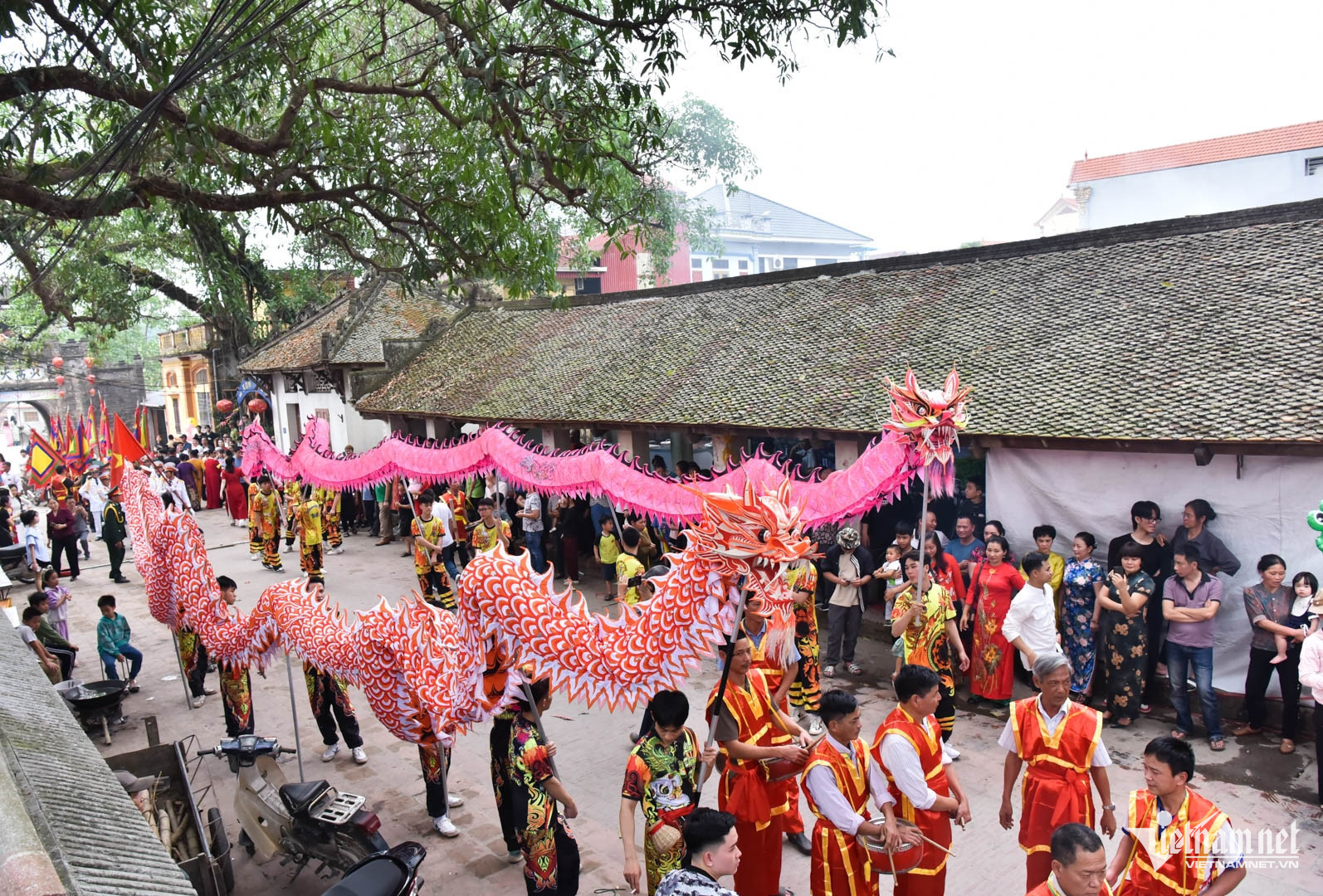The traditional craft of making pork rolls in Uoc Le Village (Tan Uoc Commune, Thanh Oai District, Hanoi) has existed for around 500 years. Generations of villagers have carried the craft to every corner of Vietnam, from the North to the South.
According to village elders, the pork roll trade in Uoc Le dates back to the Mac Dynasty (1527–1592). A concubine from the village returned home and passed down the craft to the locals. In ancient times, pork rolls were considered a delicacy, meticulously and skillfully prepared.
Through the ups and downs of history, the villagers have preserved and passed down their craft secrets.
During the annual traditional village festival, one can truly witness the prosperity and well-being of Uoc Le households.
This rare annual event also showcases artisans preparing pork rolls using traditional, manual methods. Elder craftsmen pound meat rhythmically with mastery, surrounded by children, descendants, and visitors cheering them on.
No demonstration is complete without each family’s treasured heirloom: the stone mortar.
Nguyen Viet Minh (65) has been making pork rolls since childhood. He doesn't know exactly when his family’s stone mortar was made. “All I know is that it predates even my great-grandfather. It’s a family treasure passed from generation to generation,” he said.
Families that still own old stone mortars safeguard them carefully, primarily bringing them out for demonstrations of the traditional craft or to teach the next generation and welcome visiting tourists.
According to Minh, pork rolls in the past were made entirely by hand. The meat-pounding process was crucial, requiring consistent, even strokes. The meat needed to be pounded to a sticky, elastic consistency that wouldn’t stick to the pestle - only then was it considered properly done.
“The pestle must be made from hackberry or aged longan wood so that the head doesn’t rot or crumble, which would affect the meat quality. In the past, we hand-carved the pestles ourselves. Depending on use, a pestle would be replaced every two to three years,” he explained.
Minh and his children established their pork roll business in downtown Hanoi years ago. Recently, he returns to the village every Tuesday, Thursday, and Saturday to demonstrate traditional pork roll making, mentor the youth, or welcome tour groups.
“In our day, the sound of pounding was like a morning rooster’s crow, waking the entire village with energy and rhythm. Nowadays, machines handle production, but we still want to teach the traditional way so that the sound of pounding doesn’t become just a memory.
We also want visitors to appreciate the beauty of our heritage and the meticulous effort behind the famed Uoc Le pork rolls,” Minh shared.
In the 1990s, villagers began switching to machines for making pork rolls, easing labor and boosting output. However, they continued to preserve the essential secrets that ensure product quality.
To Manh Hung (56), a Uoc Le native now running a pork roll business in Thai Nguyen, said the first step to quality is selecting the right meat. The pork must be fresh, and every aspect - from the cut of meat to the lean-fat ratio - follows a specific formula.
Skilled artisans can determine the freshness and even the age of the pig simply by examining the meat’s color and grain.
For the best pork loaf (gio lua), thigh meat is preferred. During pounding or grinding, artisans adjust seasonings such as fine salt and quality fish sauce based on the meat’s color changes. The loaf is still wrapped in banana leaves to preserve its distinctive aroma.
“Making cinnamon pork roll (cha que) is even more elaborate,” Hung noted. Each roll typically requires 10–15 kg of meat. The meat is finely ground, mixed with cinnamon powder and spices, then layered onto a stick. The first and last layers are pure lean thigh meat.
The middle layer consists of finely ground meat mixed with diced fat. The roll is brushed with a mixture of lily flower extract and honey, then roasted evenly over charcoal until the crust turns golden and aromatic.
At this year’s village festival, organizers created a massive cinnamon pork roll weighing over 100 kg - ten times the size of a typical roll.
Dang Hong Son, a representative of the festival’s organizing committee, said the colossal pork roll was crafted by dozens of artisans as a special highlight to promote the village’s traditional craft to a wider audience.
Marleine, a French tourist, and her six-member family visited Uoc Le Village during the festival. Locals invited them to experience hand-pounding pork rolls and sample the village’s signature delicacies.
“I’ve never seen anything like this - it was so lively and fascinating. We tried it ourselves and found it quite hard and tiring. This is also the first time I’ve heard of or tasted pork rolls. They’re delicious!” Marleine said.
The family spent two days in Hanoi, dedicating one to exploring traditional craft villages such as Quang Phu Cau incense village and Uoc Le pork roll village. The tranquil scenes and rich cultural heritage of these villages left a lasting impression on them.
Today, experiential tourism is gradually taking shape in Uoc Le. Several households now welcome guests to try hand-pounding, learn about traditional pork roll-making processes, and tour historical sites in the village.
In 2023, Uoc Le pork rolls were granted collective trademark protection by the Intellectual Property Office, boosting brand recognition and affirming the value of the village’s products.
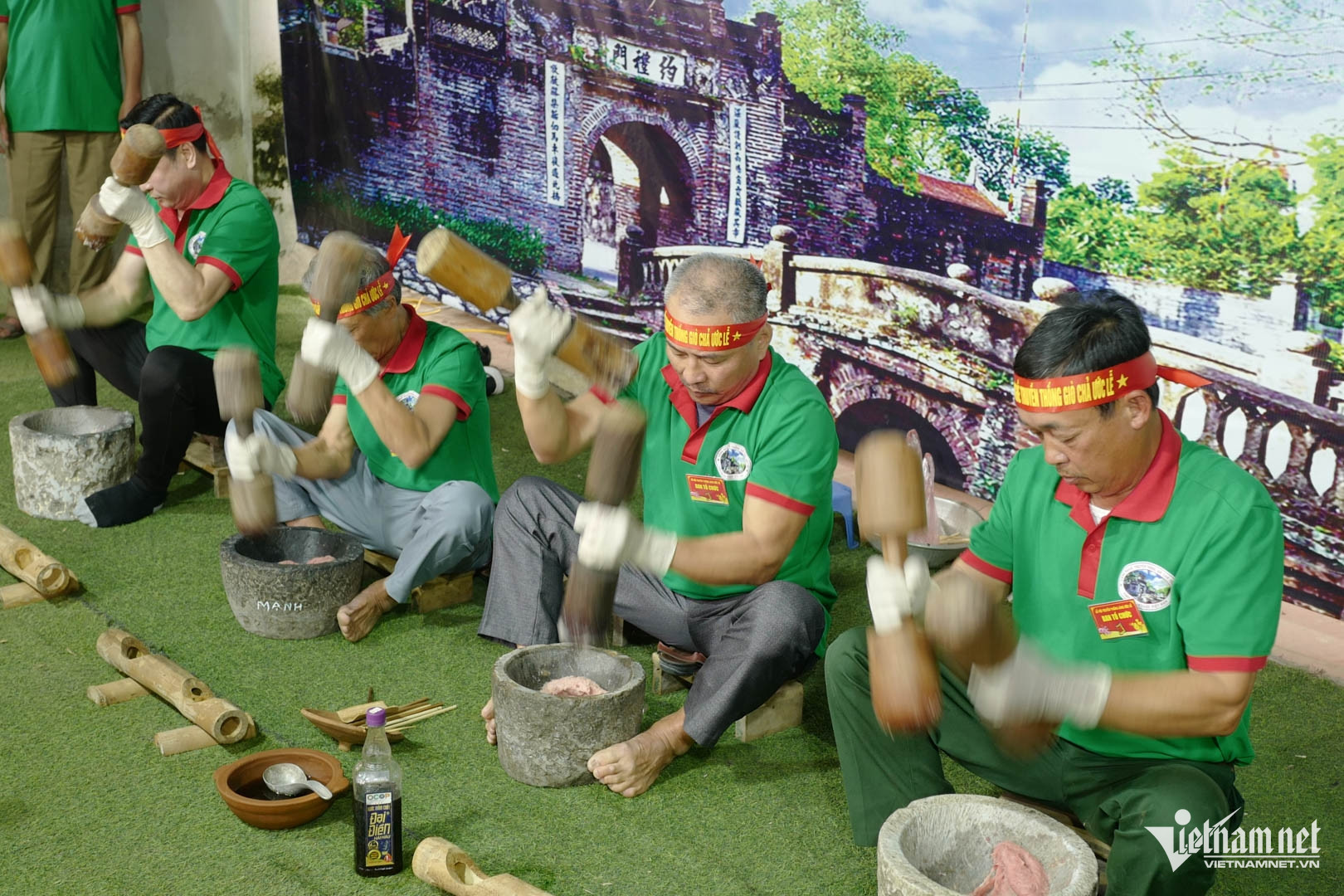

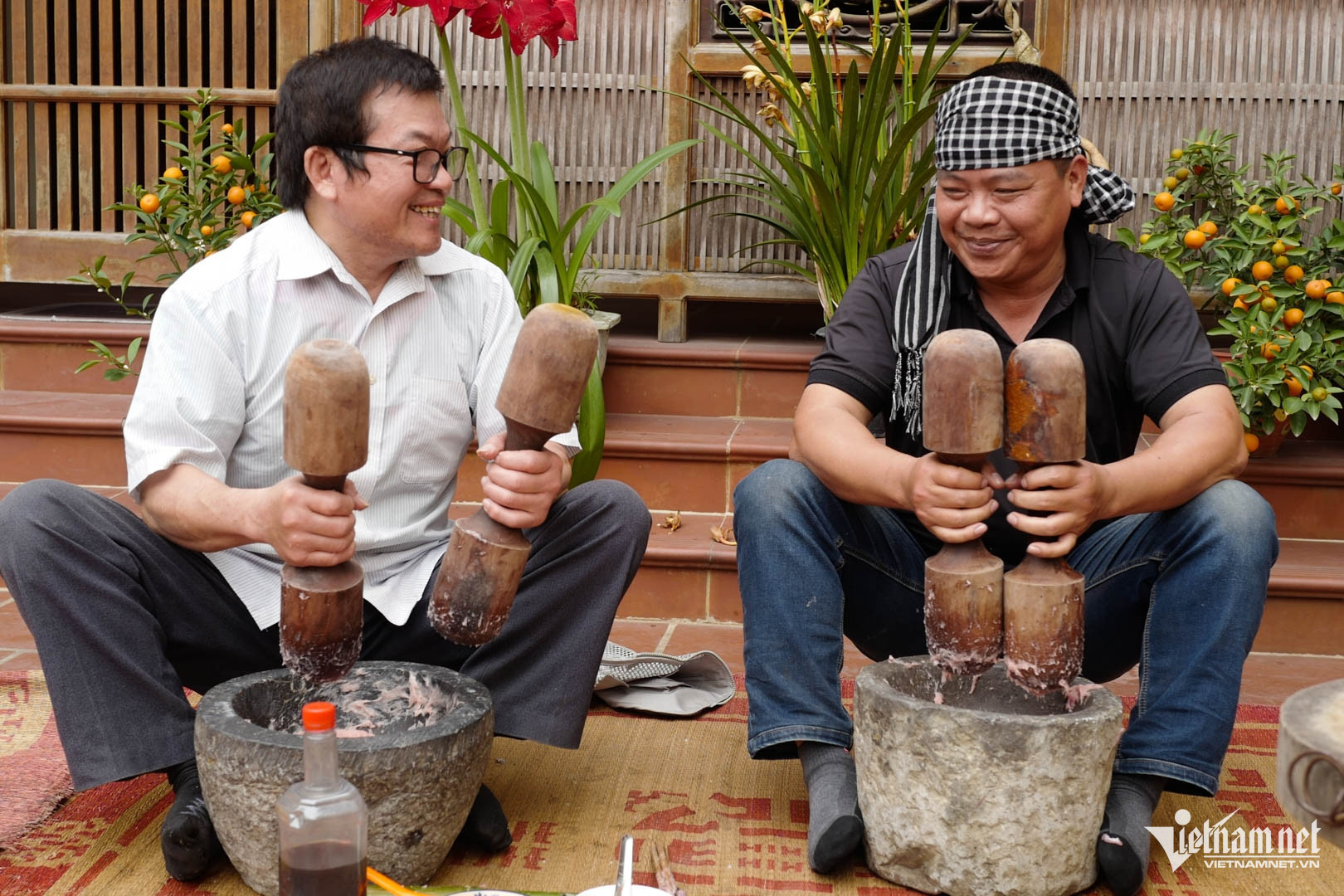


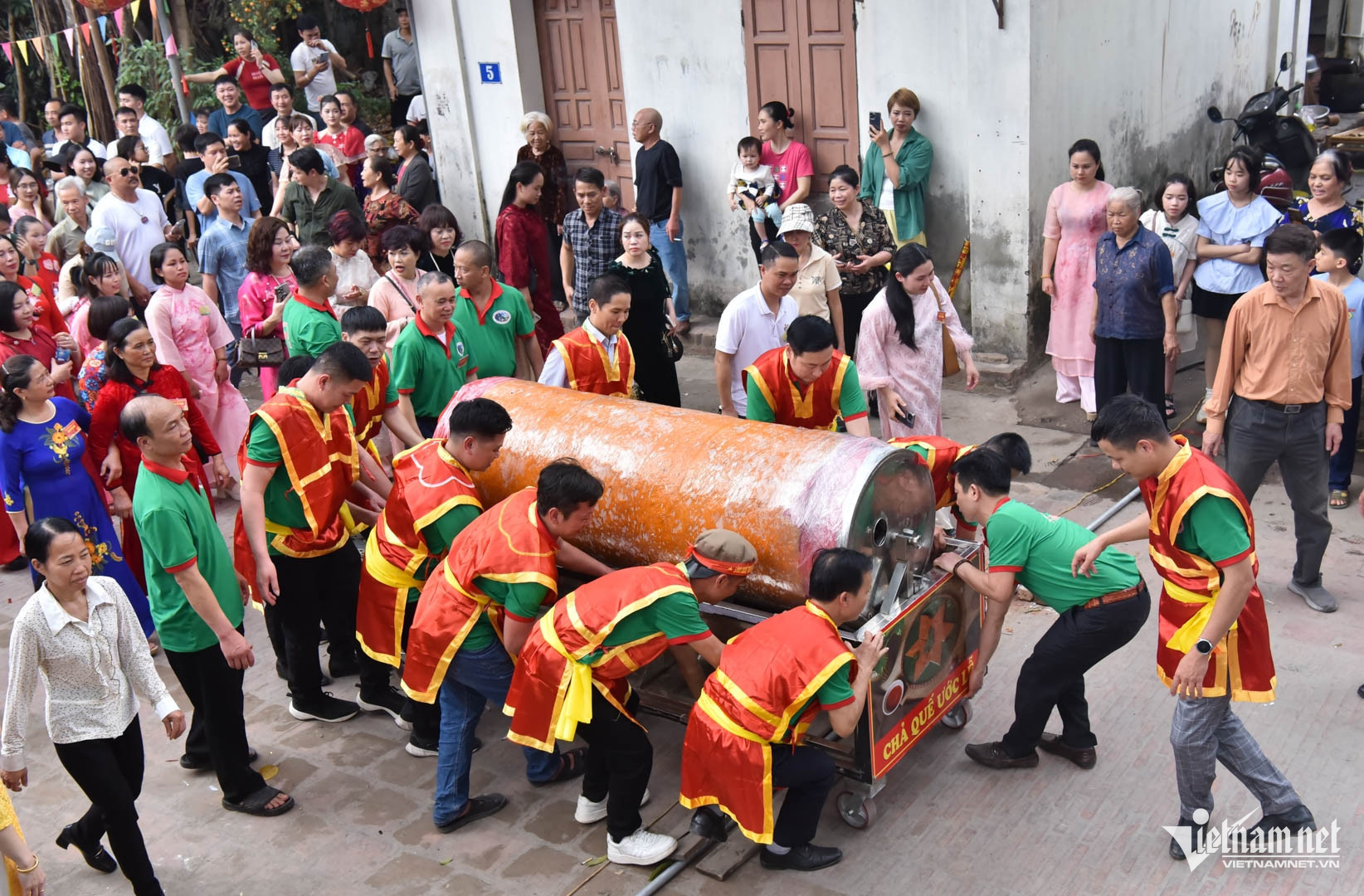
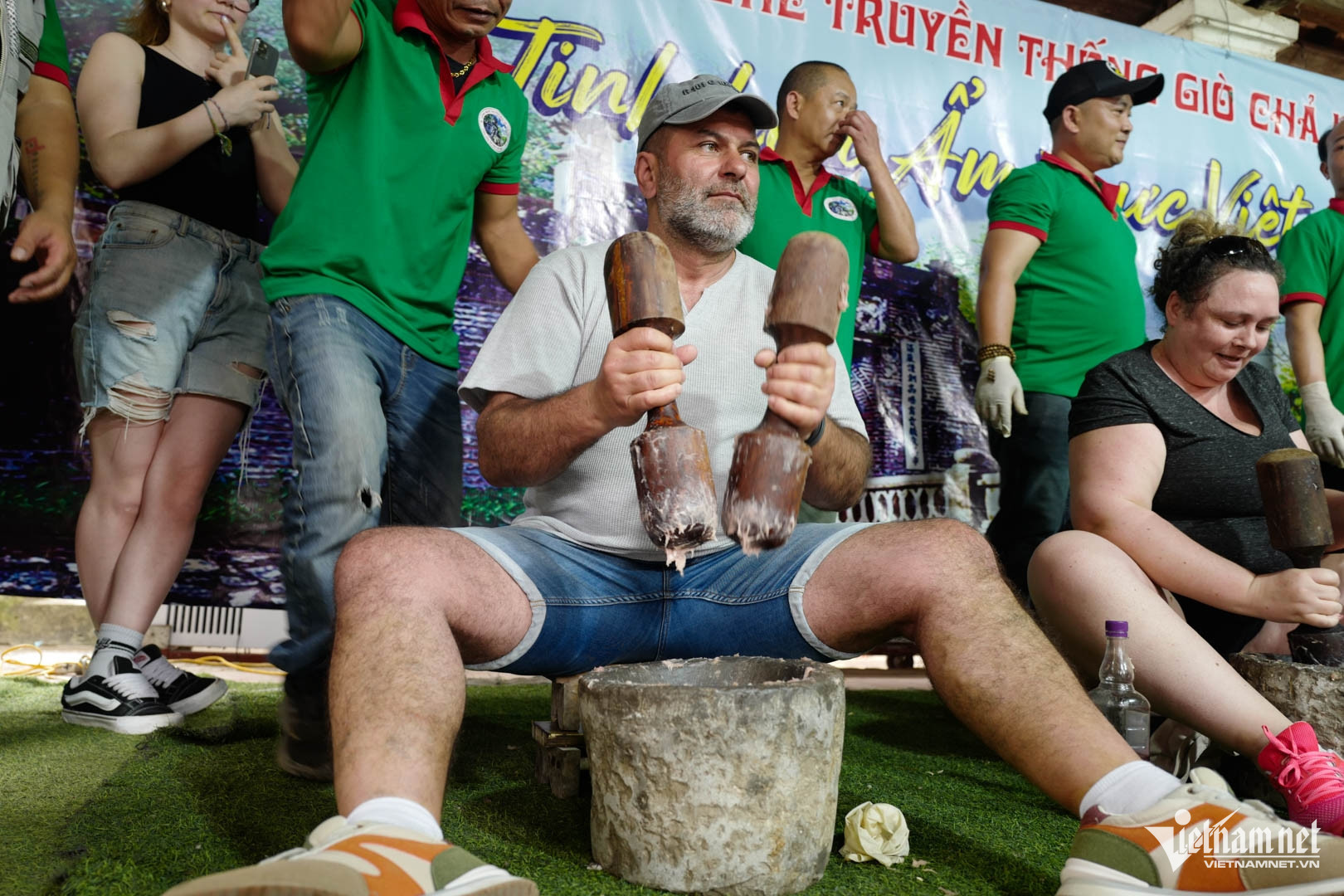 |
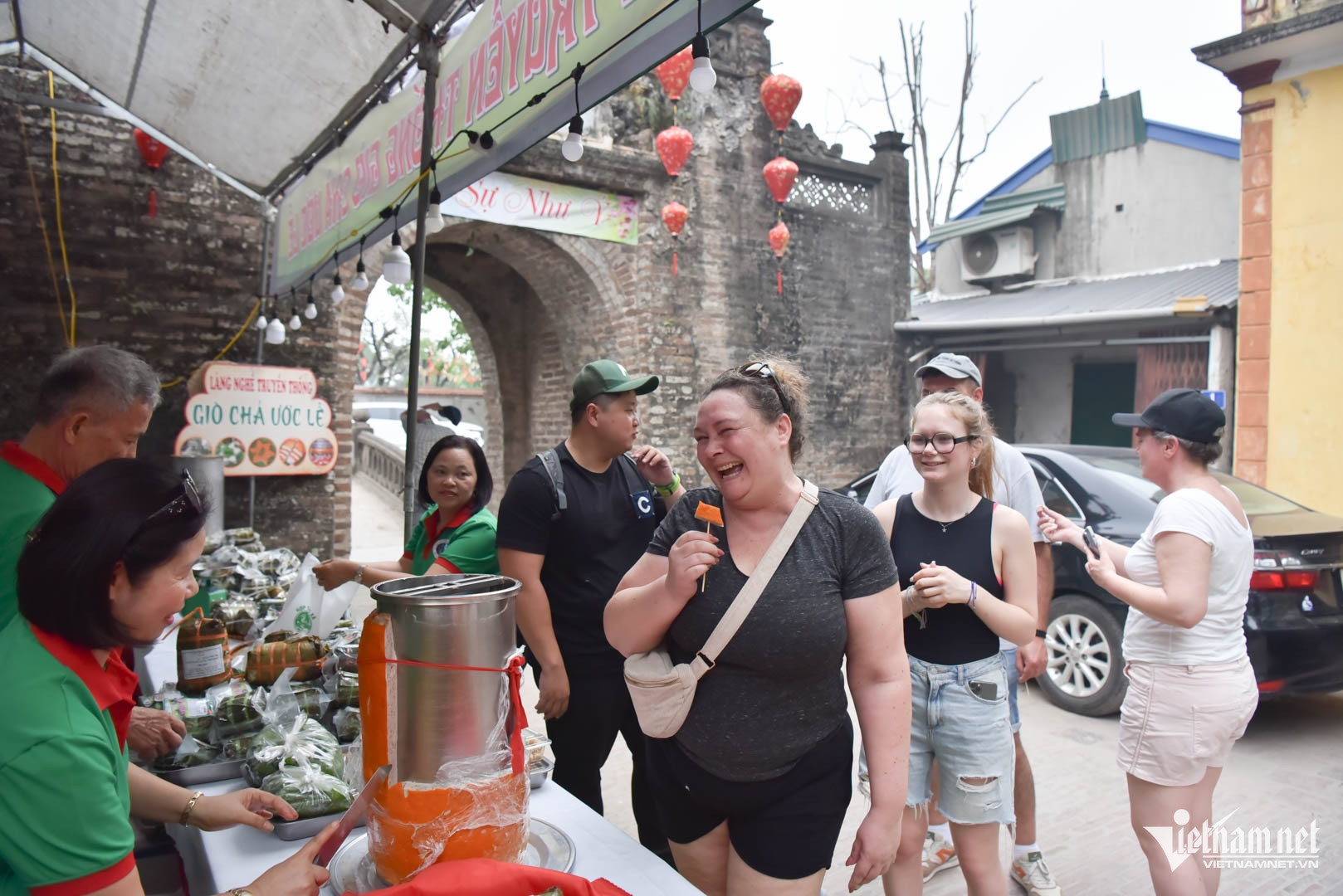 |
